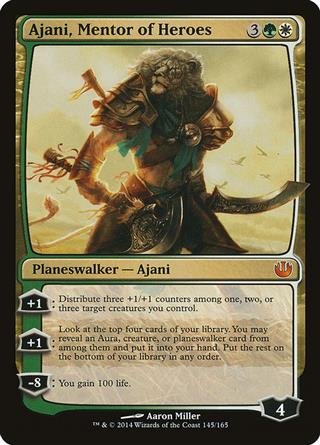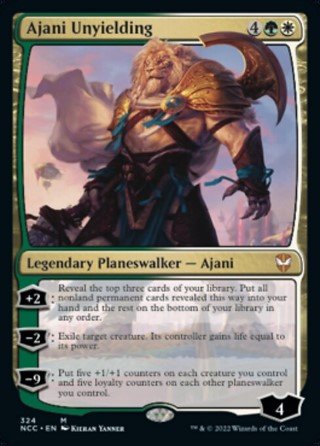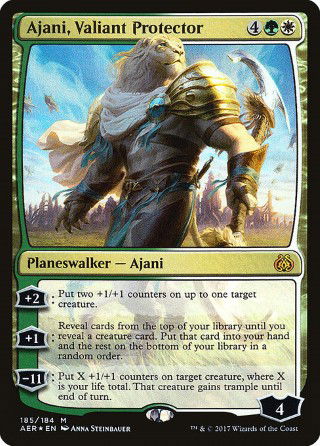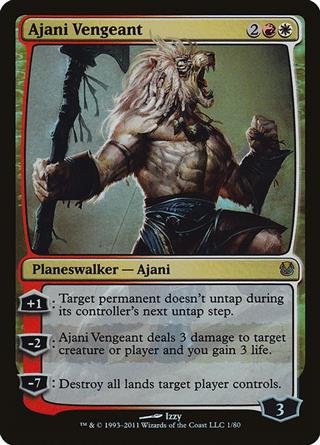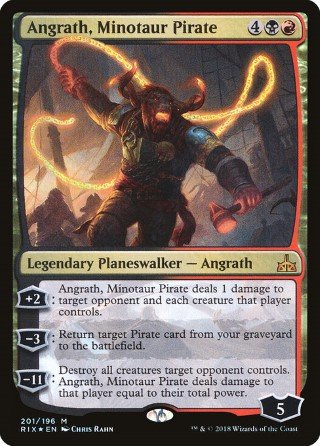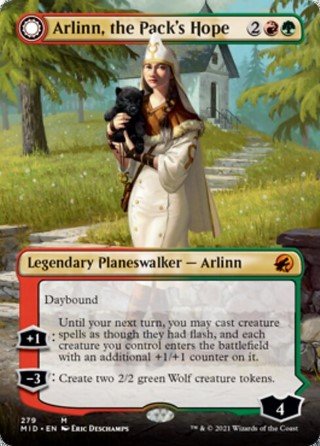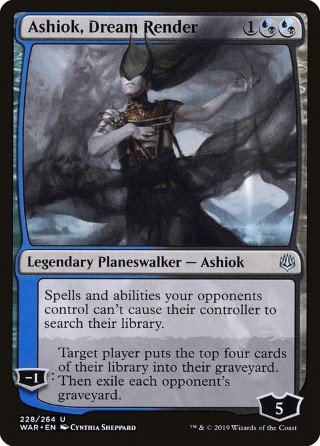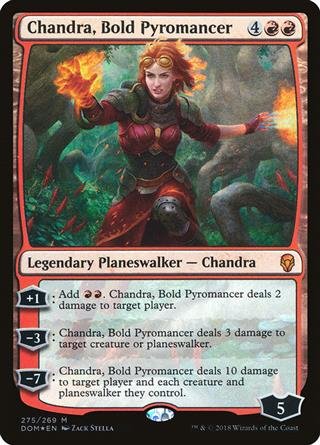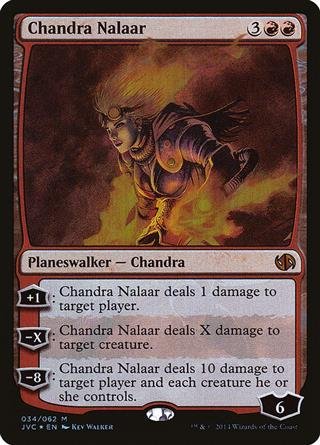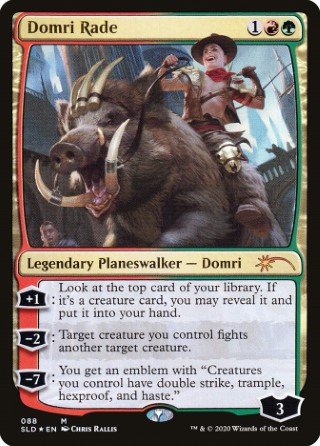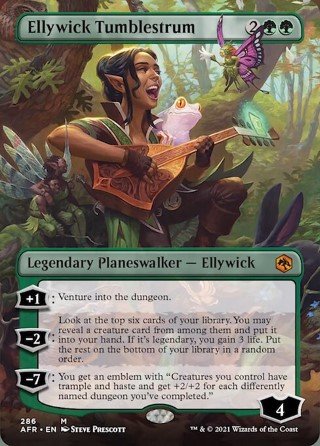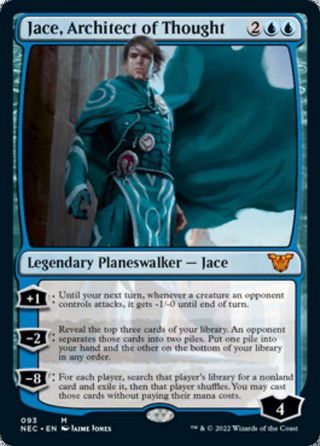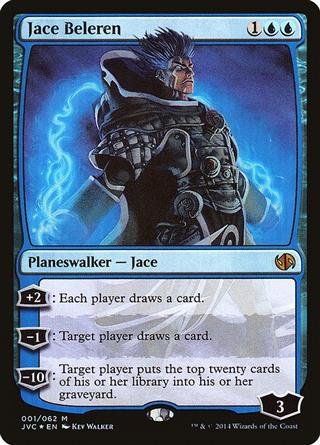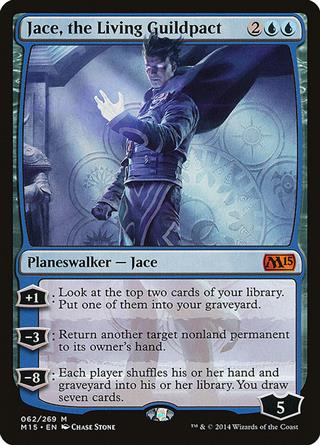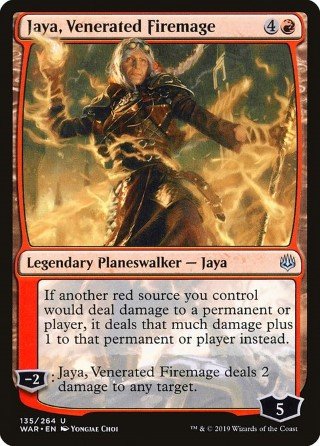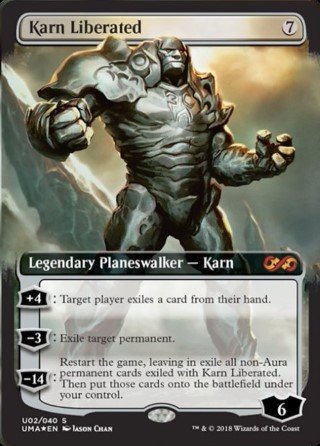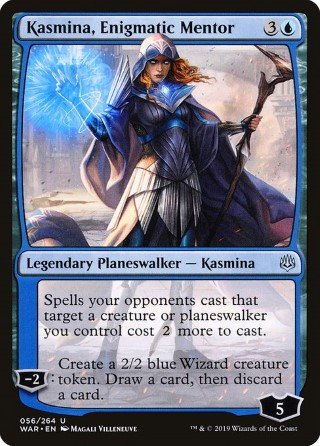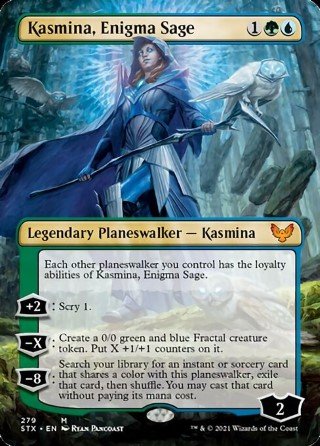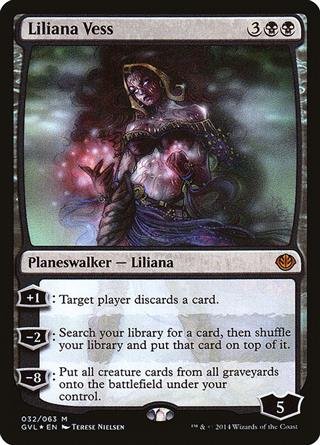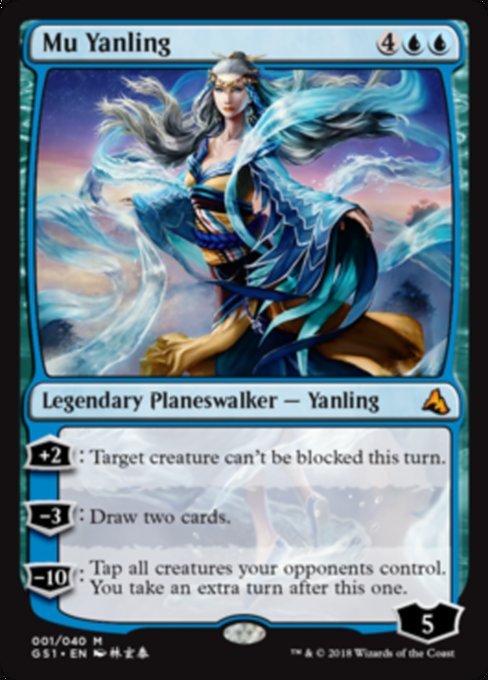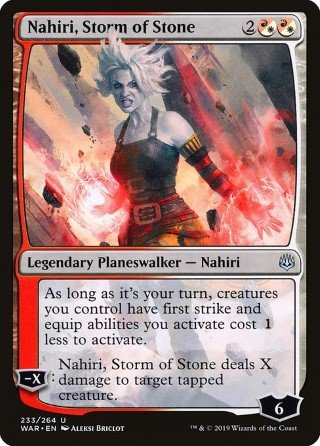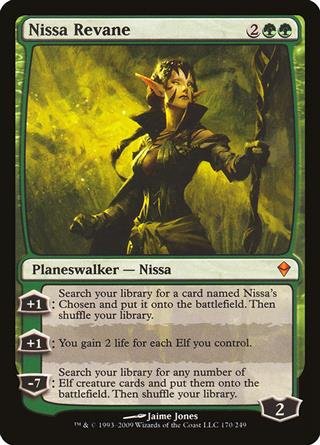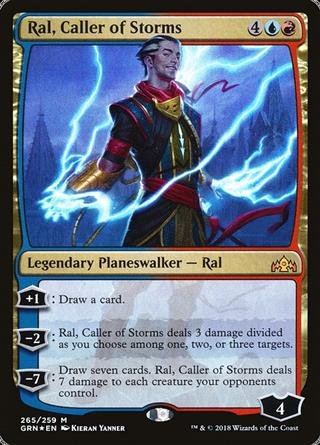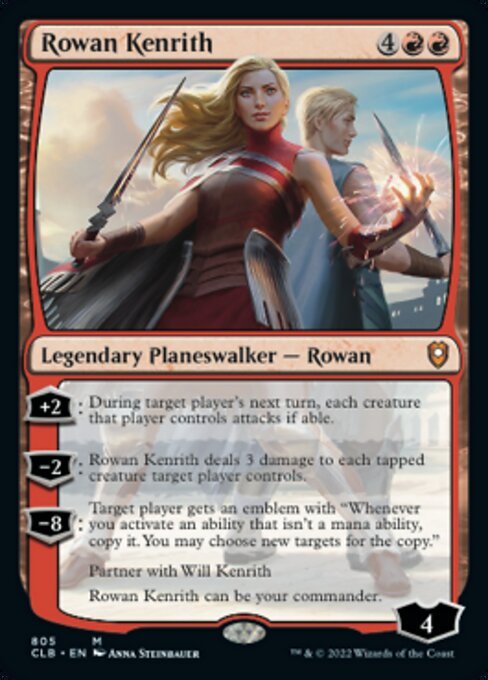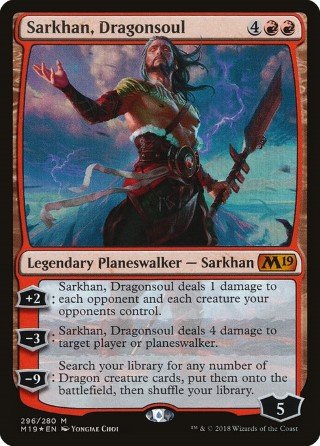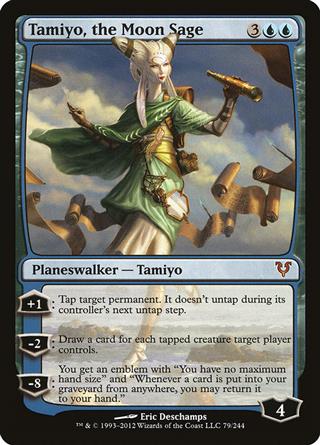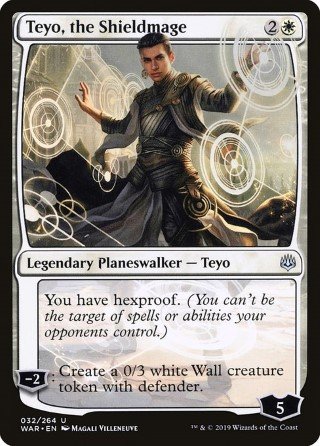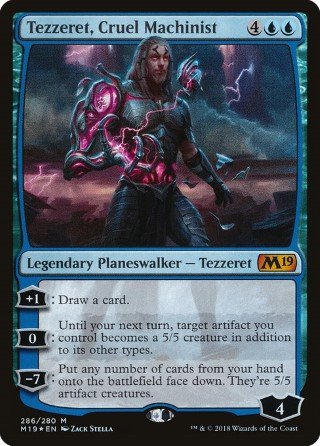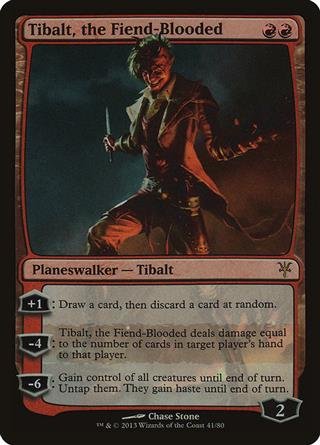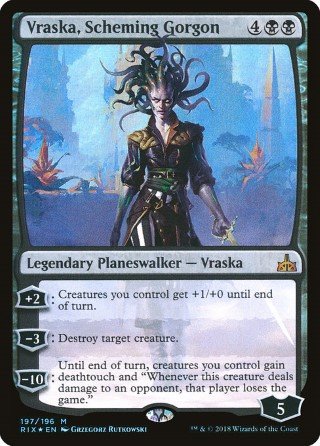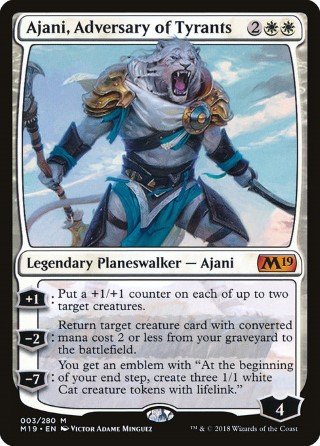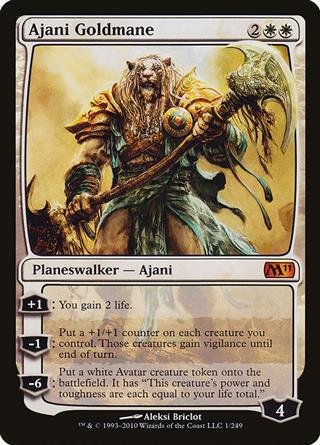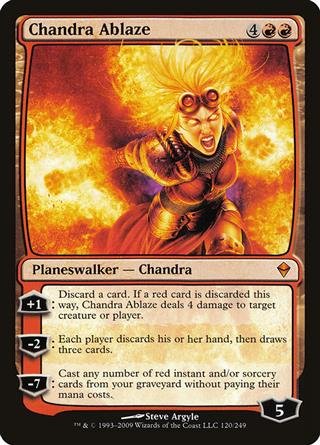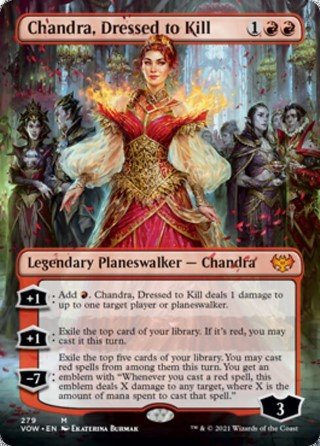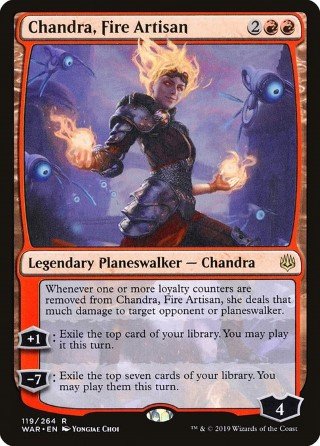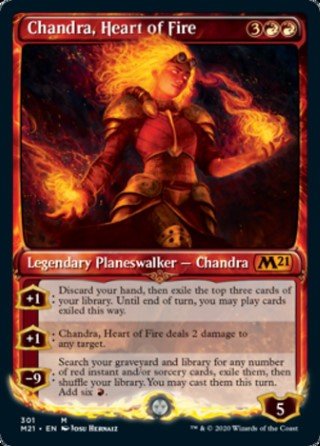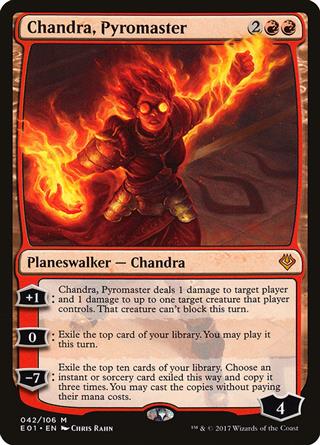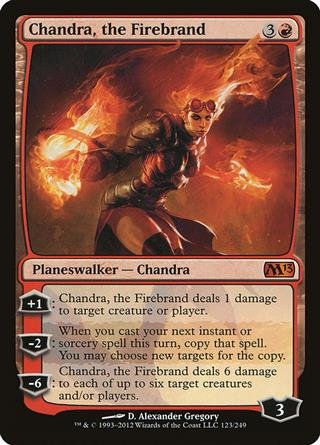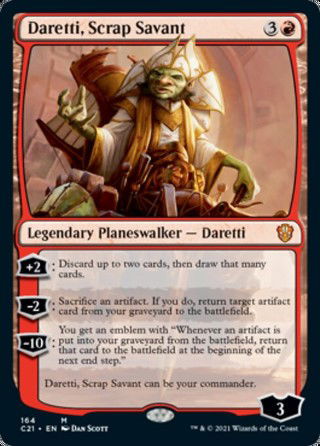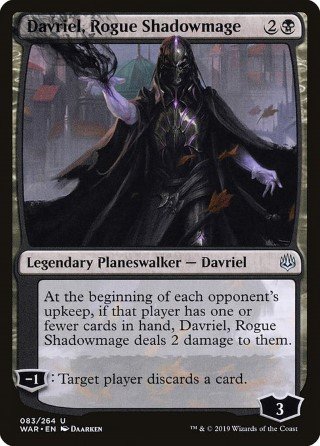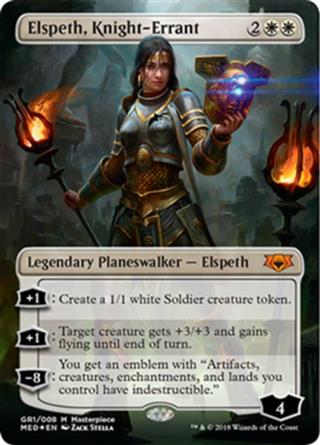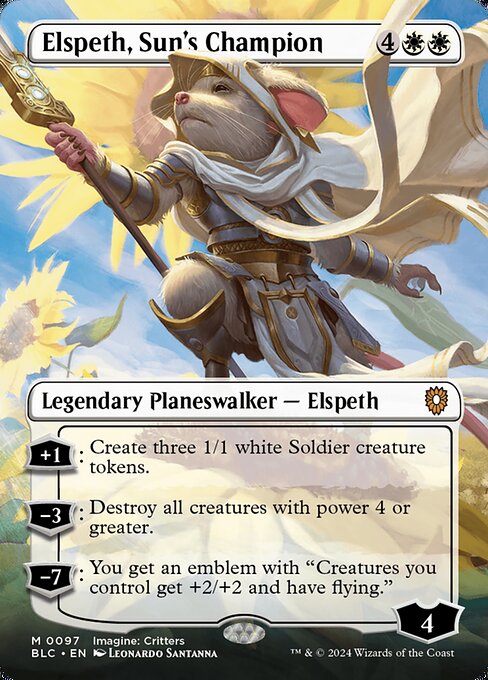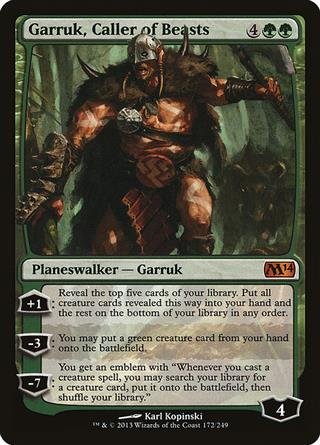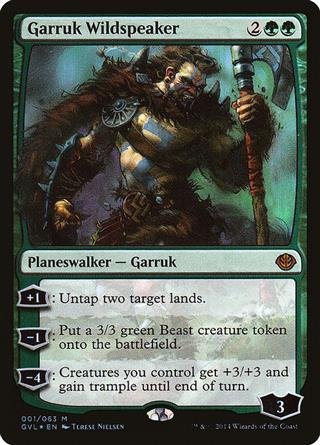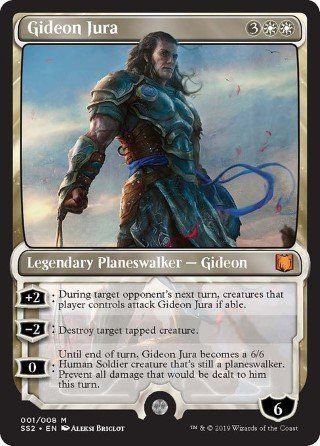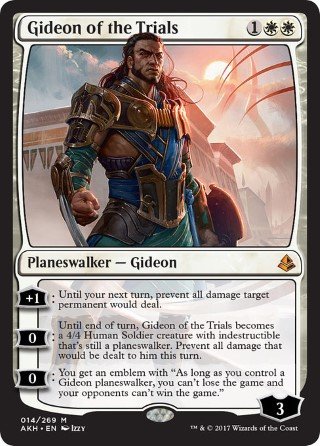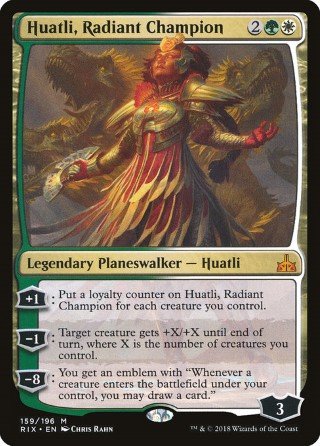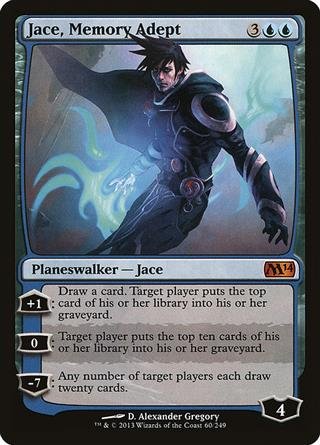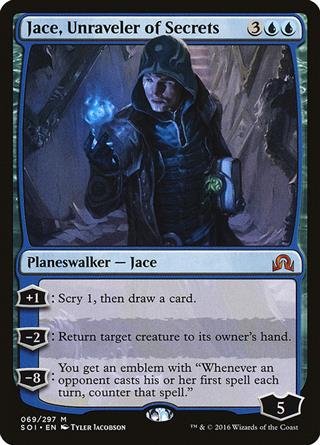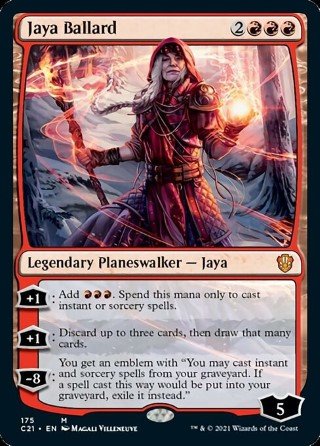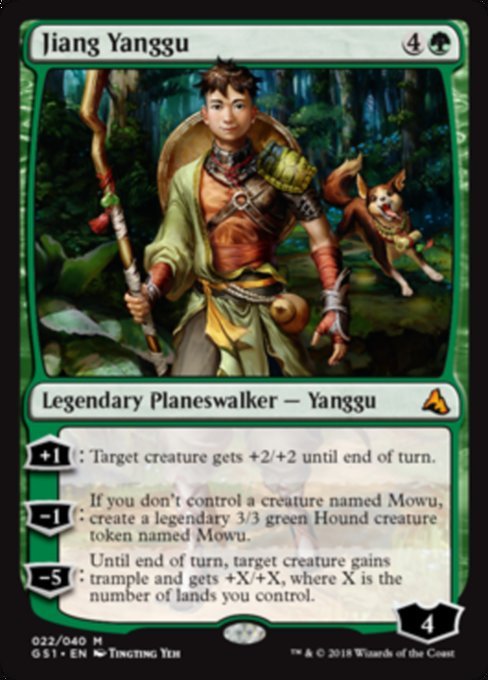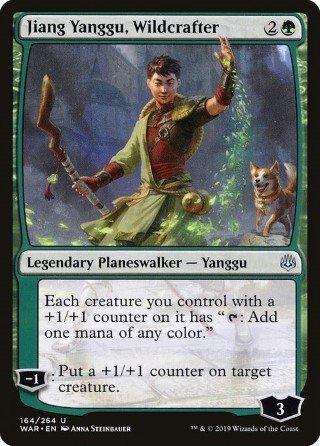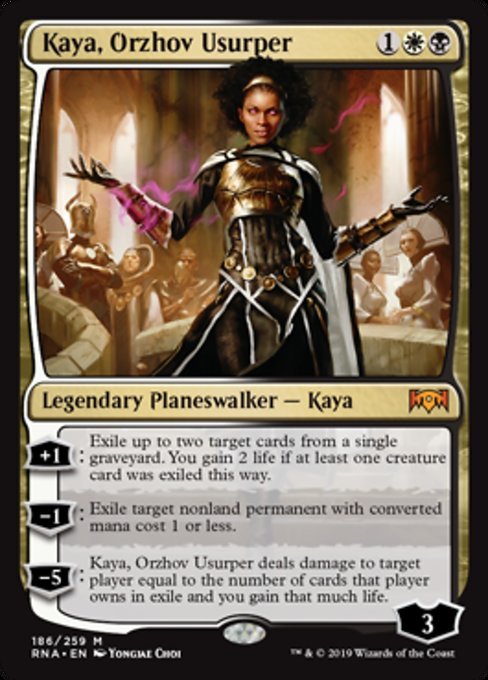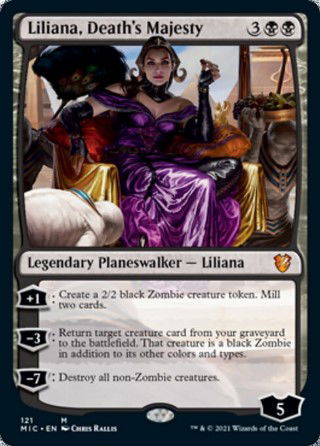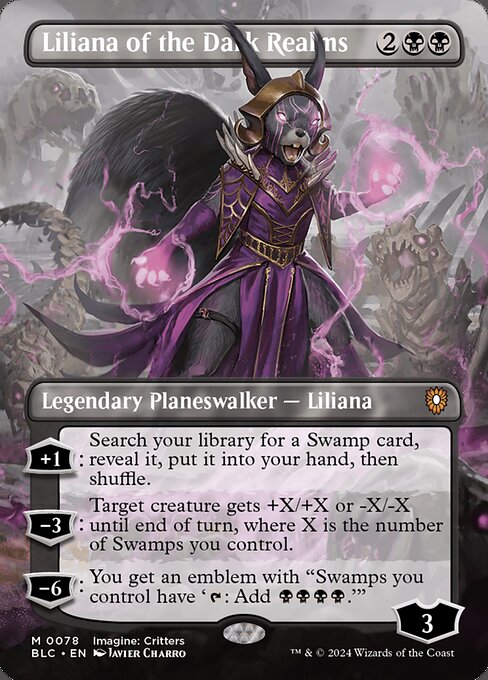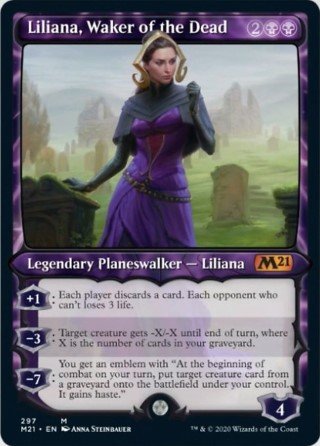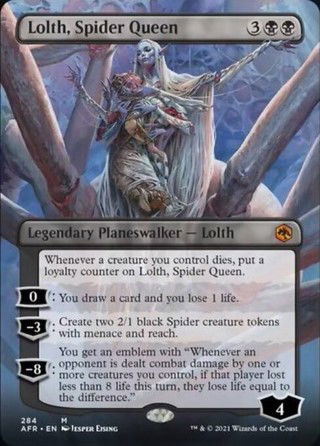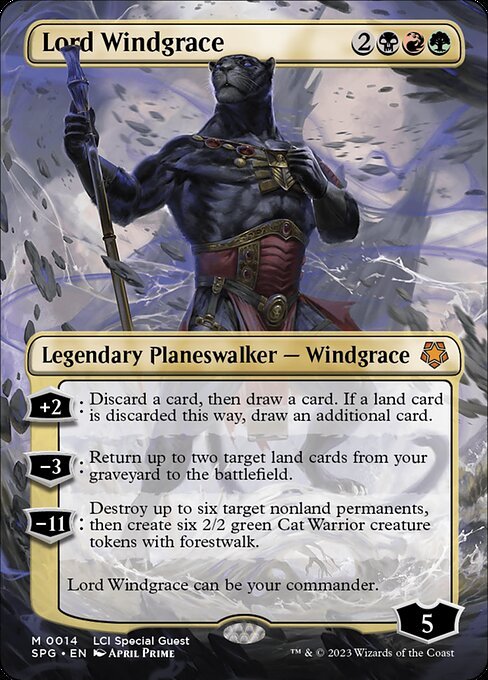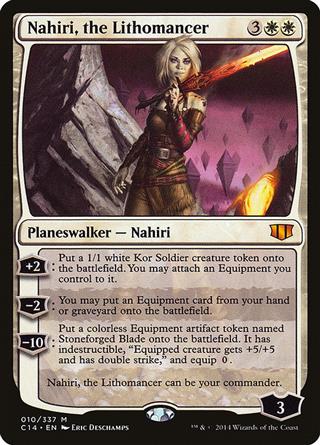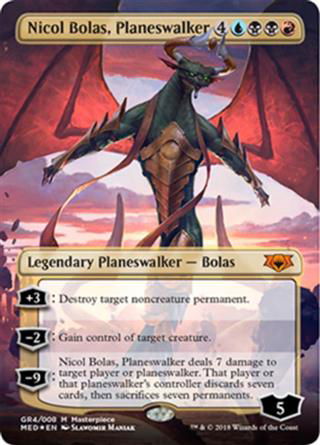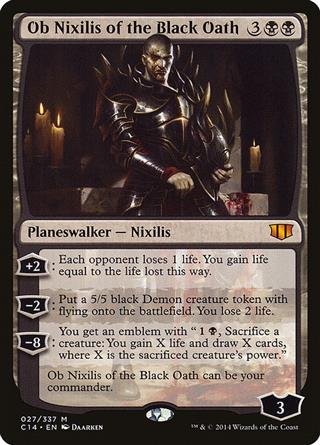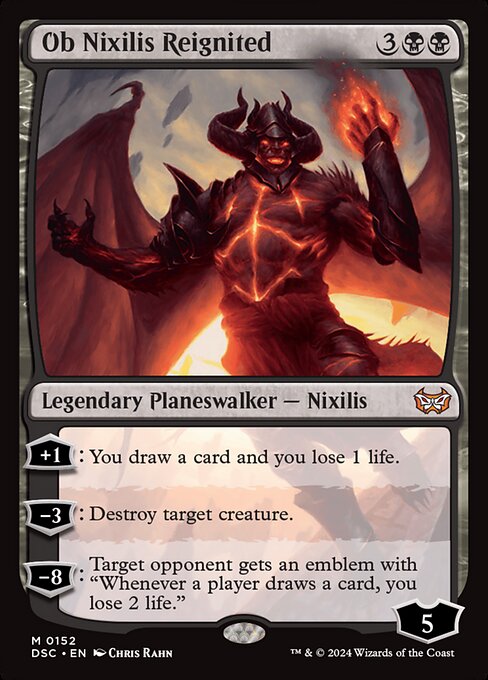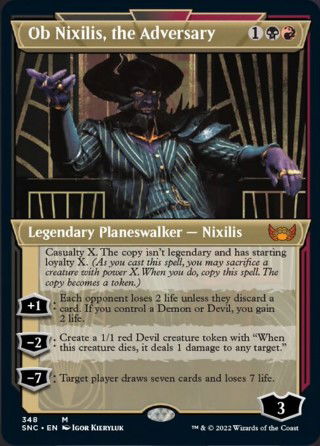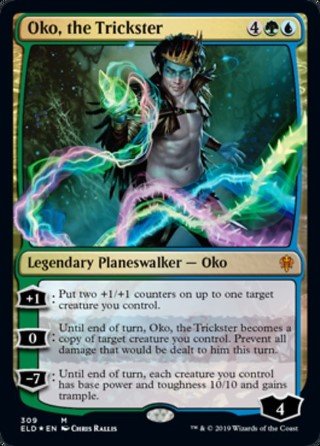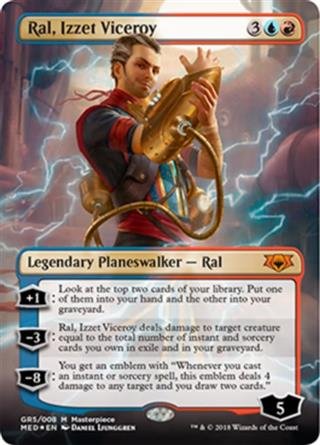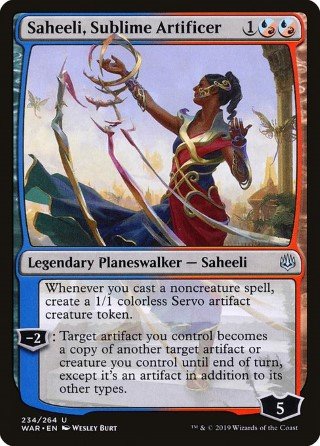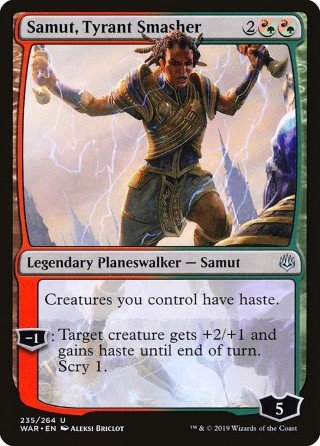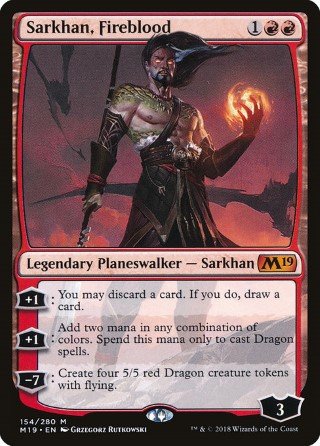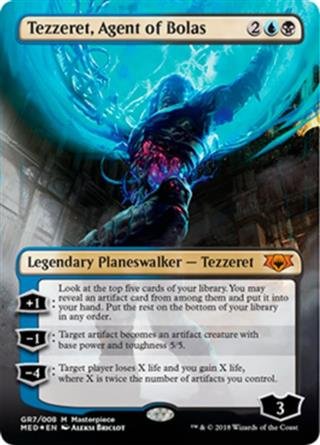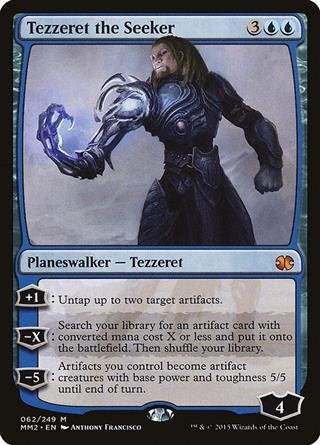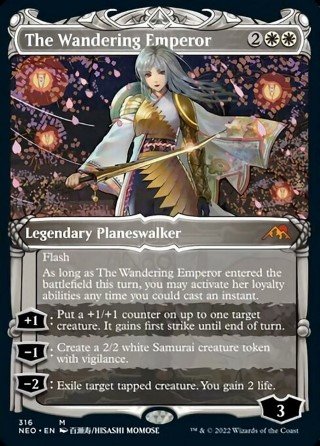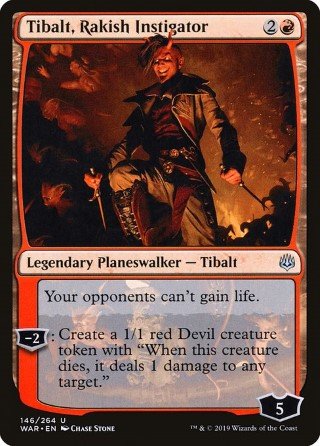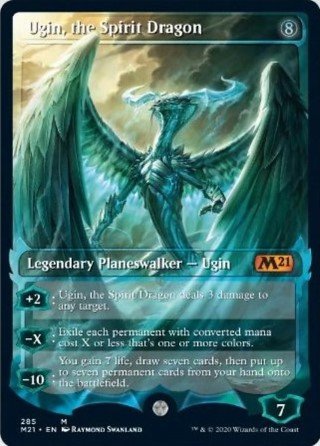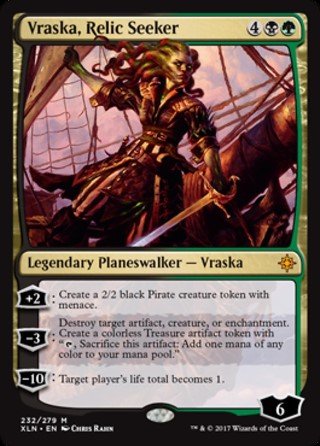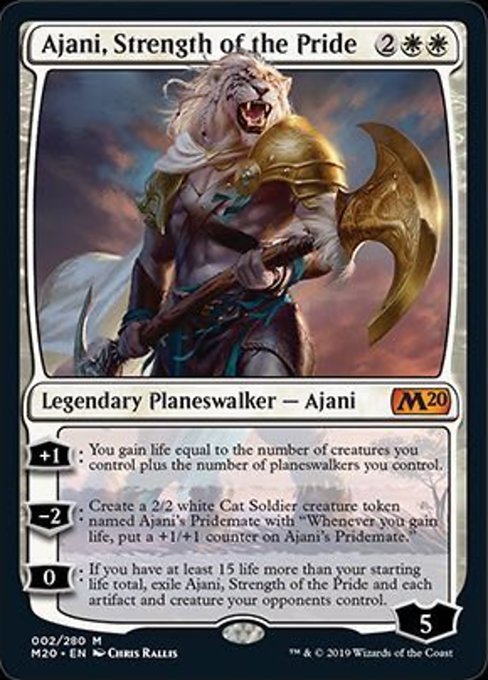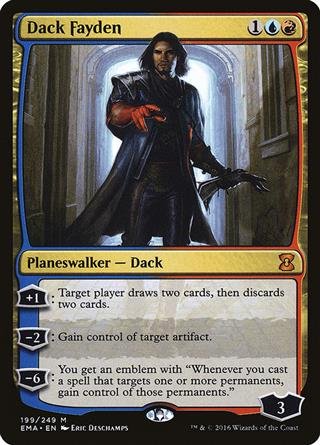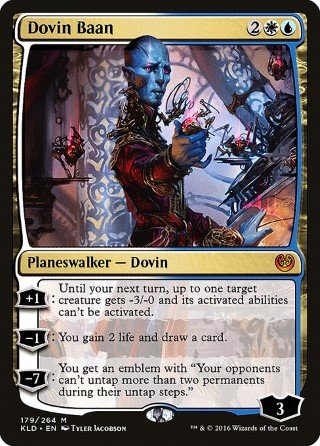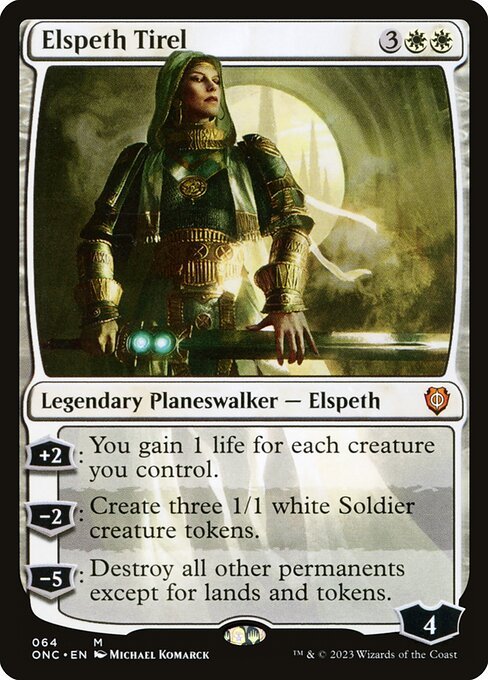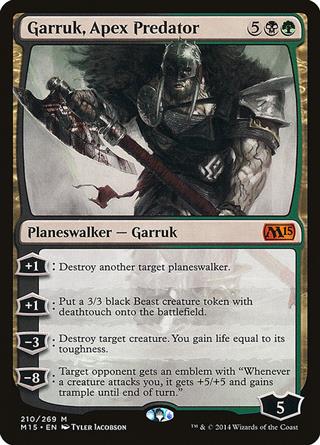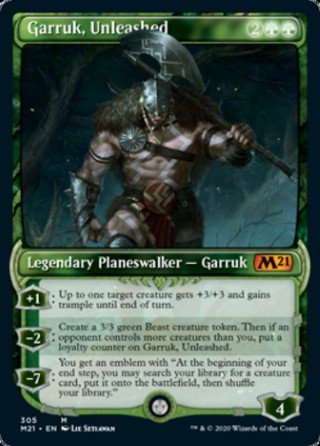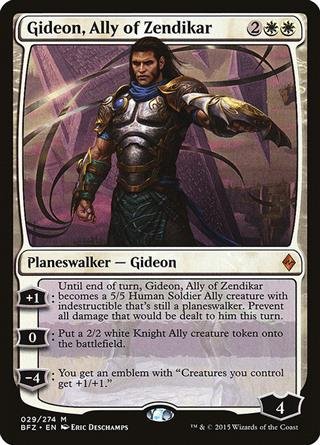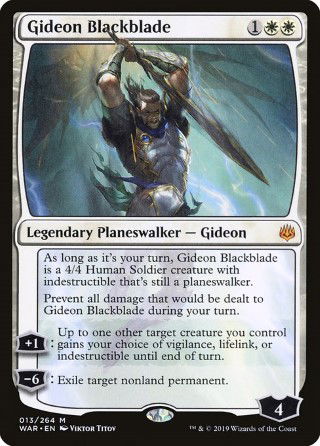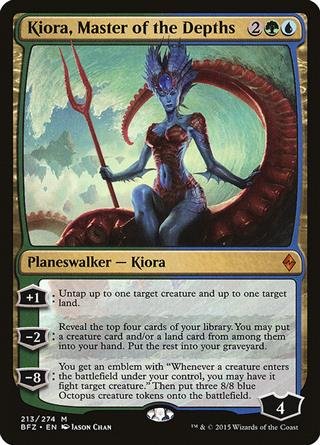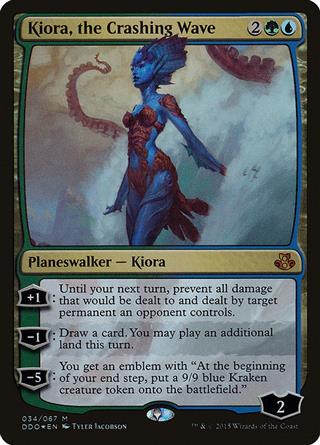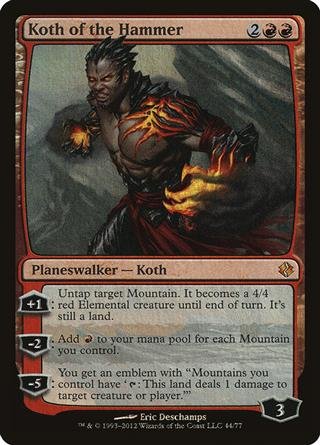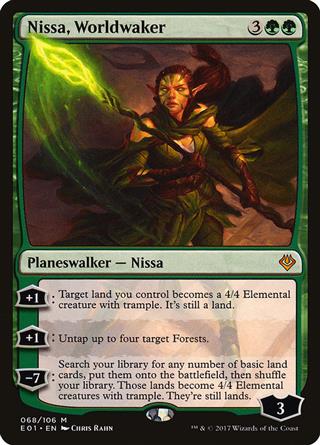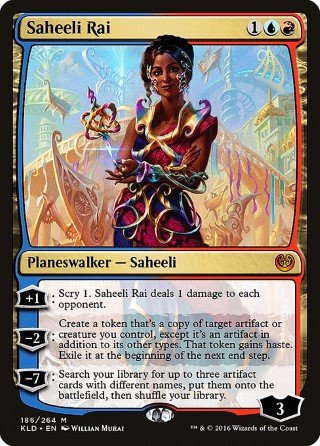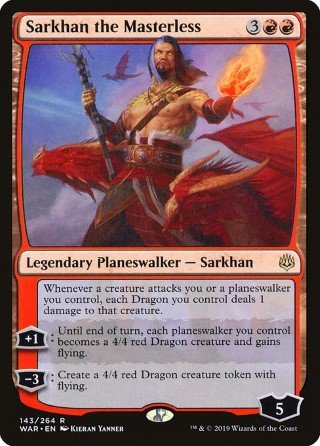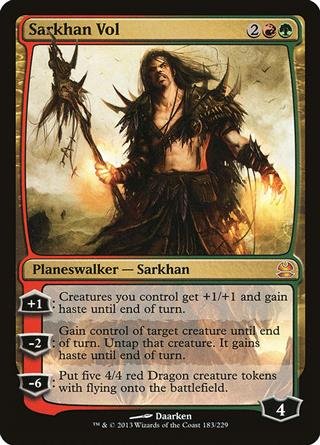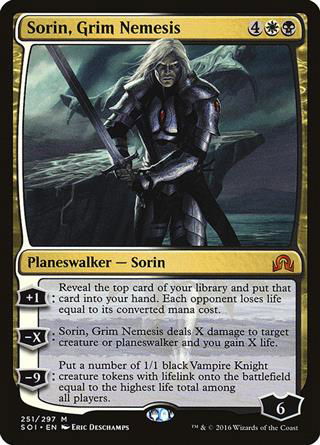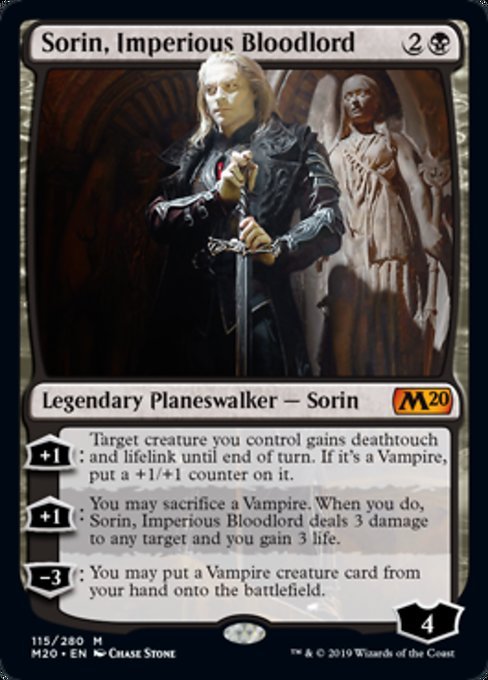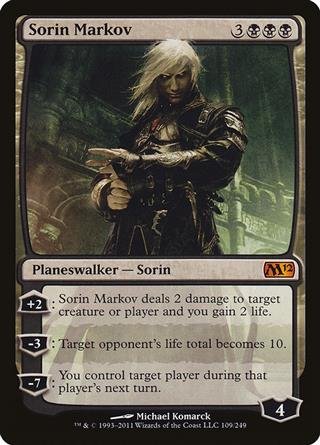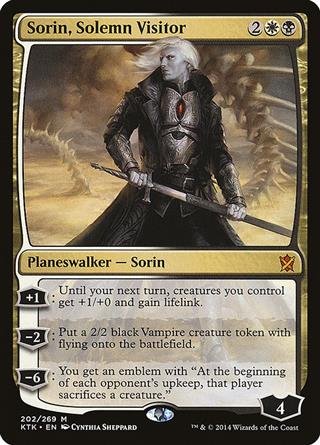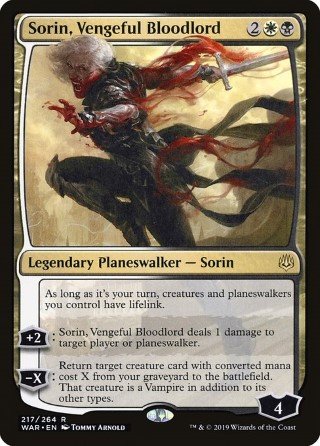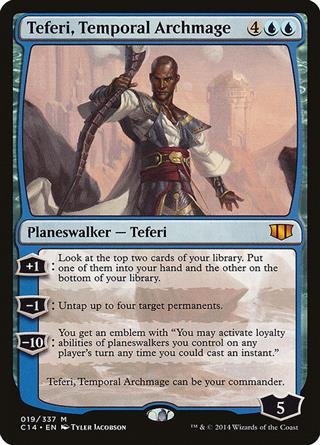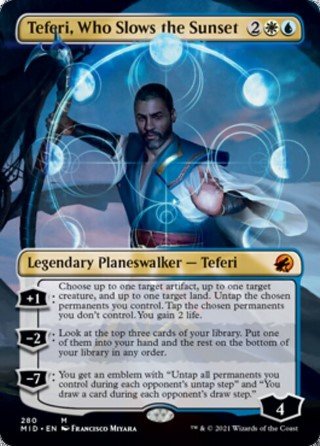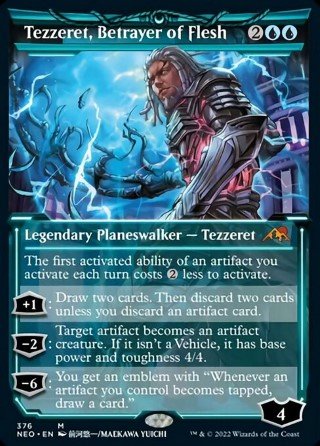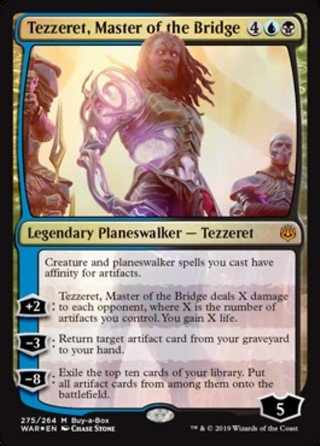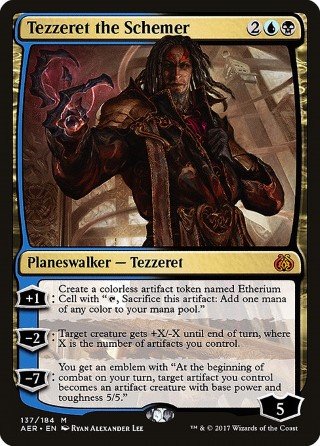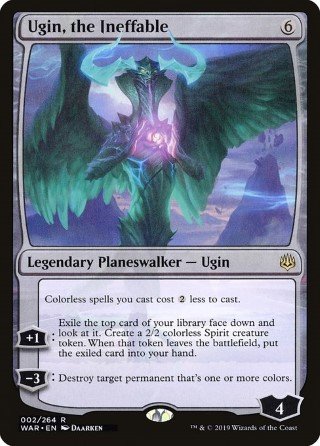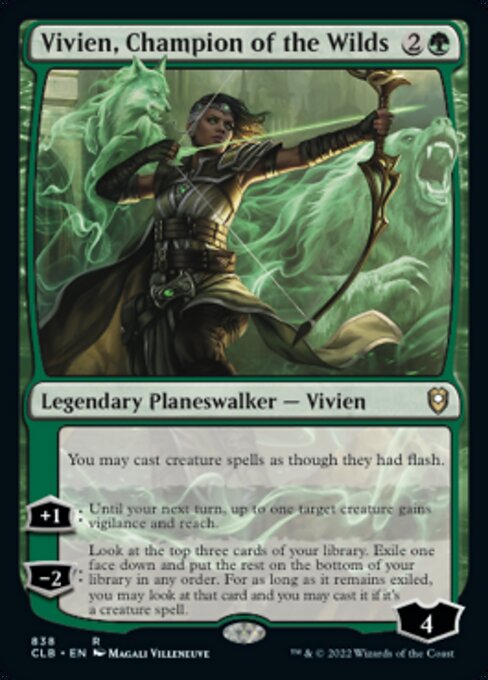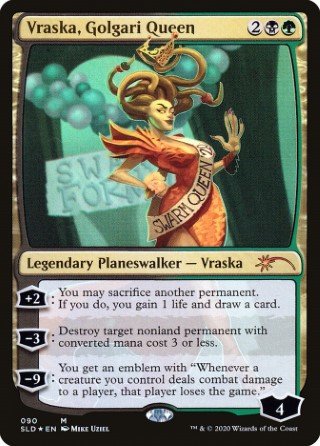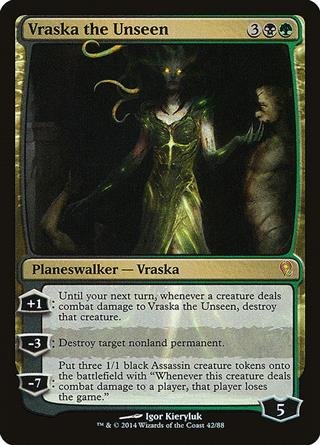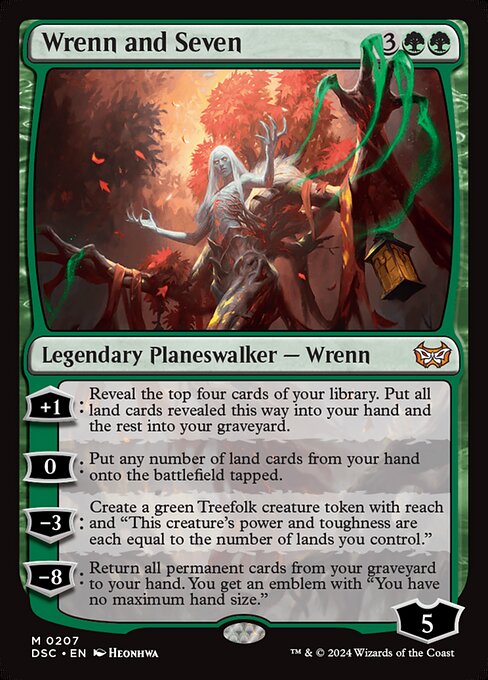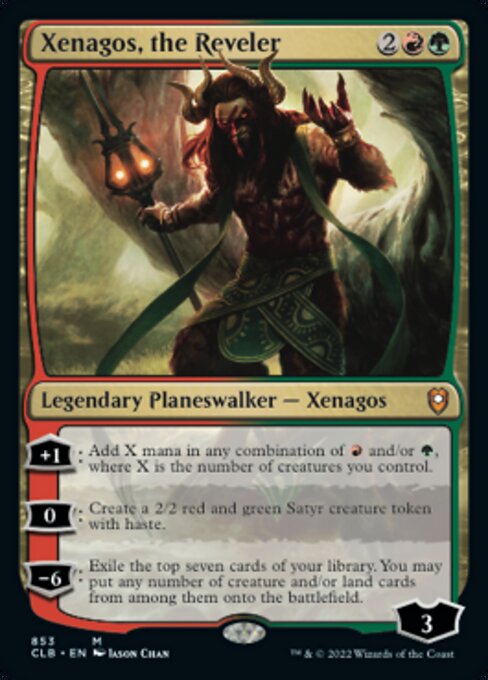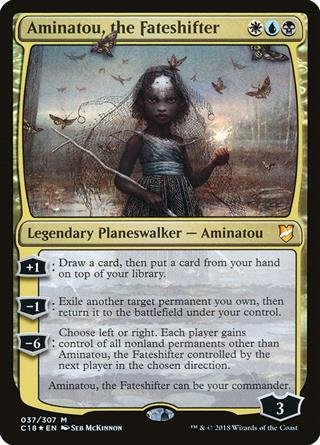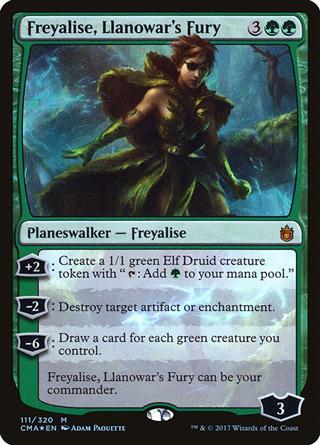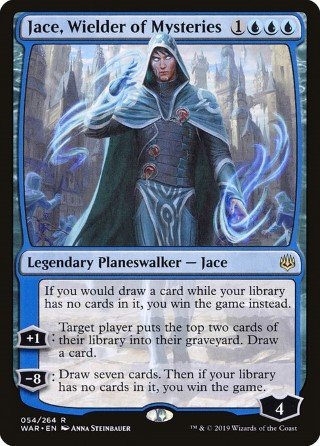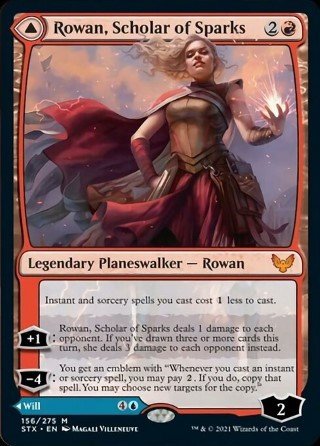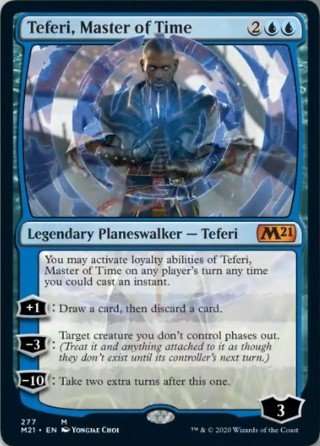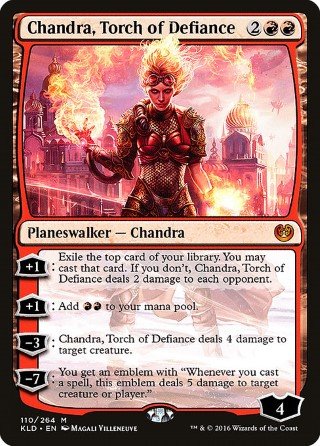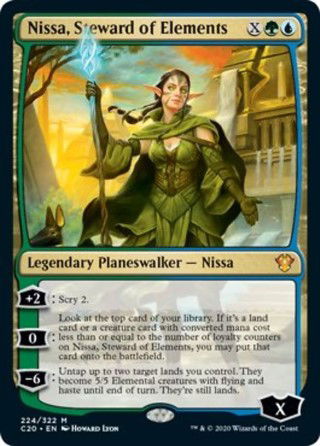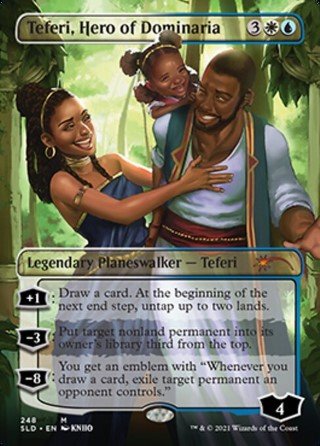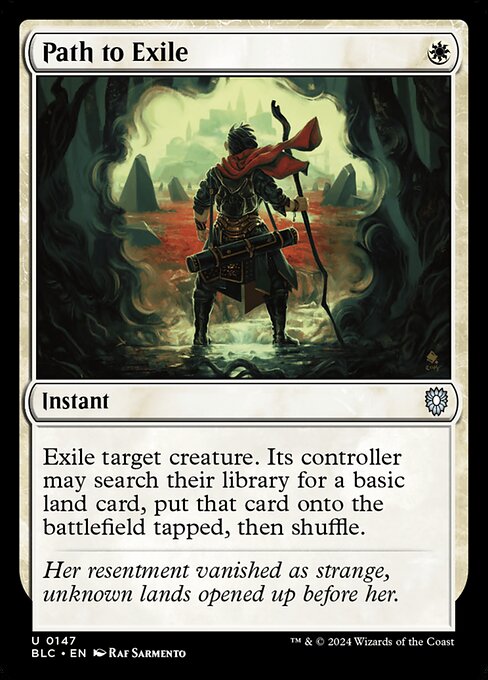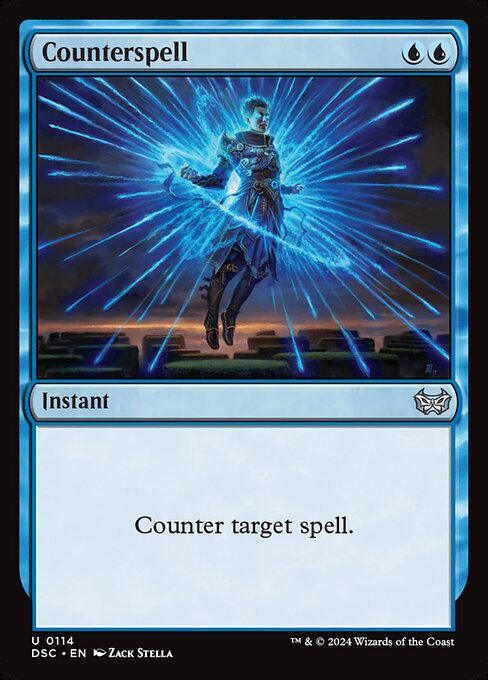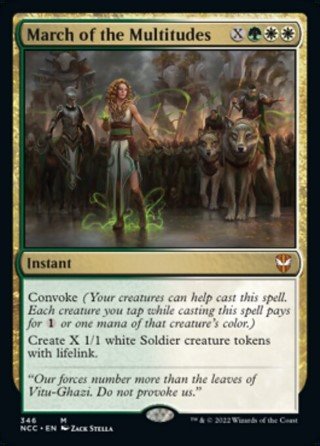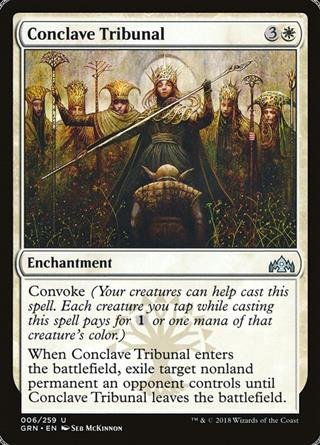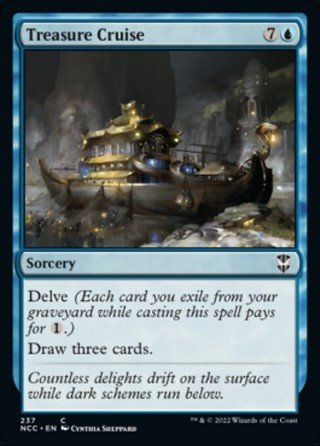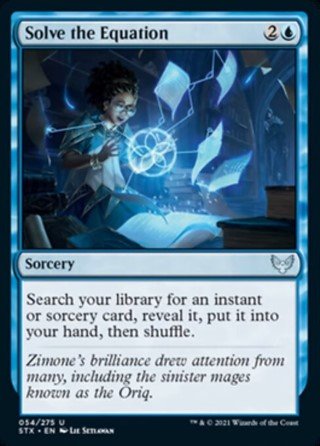Oathbreaker Guide: How To Choose A Powerful Oathbreaker & Signature Spell
Oathbreaker has been around for a while but was only just now made an official format. It's similar to Commander but instead of a legendary creature at the helm you build around a Planeswalker and you get to choose an instant or sorcery spell to be in the command zone as well. These additions are what make the deck building so interesting.
After all, it's completely unique to Oathbreaker and you have access to nearly all of the spells throughout magic's 30-year history for your signature spell. So, today I would like to go over some of what makes good Oathbreakers, a list of Planeswalkers and how competitive they are, and some do's and dont's when choosing your signature spell.

How To Choose A Strong Oathbreaker?
First things first, let's start with the planeswalkers. As of now, there are 275 eligible choices for Oathbreakers and some are much better than others. I say "better" meaning competitive/powerful. Obviously, feel free to play any card that you enjoy. That said, Oathbreakers are generally looked at on a scale from casual to max-power, with a few categories in between.
You May Also Like: How To Play Oathbreaker - MTG's Newest Format: Rules, Banned Cards And More
Things To Avoid
Cards usually fall into this category for a few reasons - The first would be having a very high mana cost. The format is a lot faster than Commander because you have 60-card decks and only 20 life. So, if your walker costs too much you may lose before your deck gets going. But what this really comes down to is how powerful the card is for its mana value.
Higher mana spells that don't have super impactful abilities are obviously something you'll likely want to avoid. A few random examples of this would be things like Liliana, Death Wielder , Chandra, Pyrogenius
, Chandra, Pyrogenius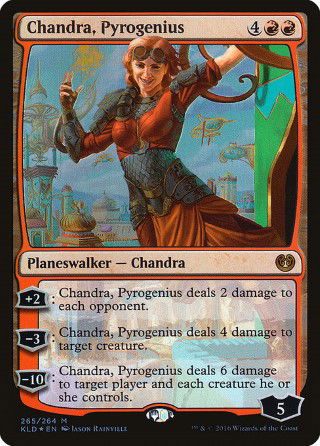 , and Jace, Arcane Strategist
, and Jace, Arcane Strategist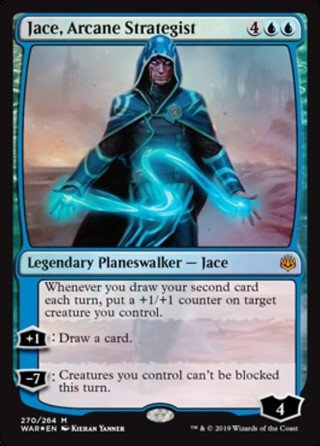 .
.
Another thing to take into consideration is the War of the Spark cards that only have minus abilities. Cards such as Arlinn, Voice of the Pack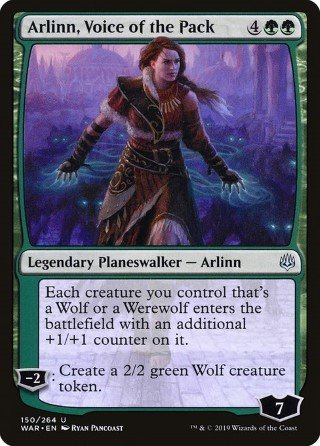 , Angrath, Captain of Chaos
, Angrath, Captain of Chaos , or Kaya, Bane of the Dead
, or Kaya, Bane of the Dead are going to be hard to build around considering they have no way to plus themselves.
are going to be hard to build around considering they have no way to plus themselves.
The key takeaway here is to remember that the format can be fast and aggressive and make sure you choose something reasonably costed and impactful.
Mid-Power Options
Moving on from what might be considered poor options you have the mid-power tier. These are cards that I would say avoid everything mentioned above but aren't necessarily top-tier or combo oriented. Anything that is well-costed, has some impactful abilities that you can build around, or can easily reach its ultimate would be in this category.
Competitive Options
Walkers in this section will usually have a few things going for them. I would say the ability to affect the board/game immediately, even aside from their ultimate is a big factor. Next, they often synergize extremely well with a signature spell. An example that I cover more below is Nissa, Who Shakes the World , which is very powerful alongside Nissa's Triumph
, which is very powerful alongside Nissa's Triumph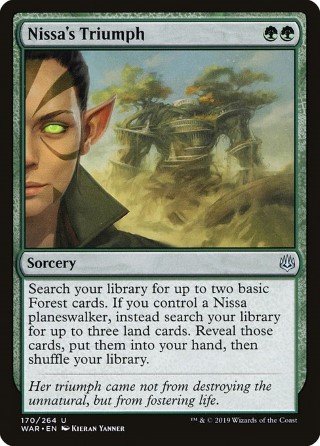 .
.
Even all alone, she starts to generate value as soon as she hits the field thanks to her powerful static ability. She also has a plus one that will allow you to cast Nissa's Triumph as soon as you play her by untapping a forest and allowing it to tap for an extra mana. And the signature spell itself works perfectly with the static ability and even gets more powerful thanks to Nissa being, well Nissa.
as soon as you play her by untapping a forest and allowing it to tap for an extra mana. And the signature spell itself works perfectly with the static ability and even gets more powerful thanks to Nissa being, well Nissa.
The overall takeaway is that everything works together making the other elements better without having to plus your walker to a high loyalty. In other words, synergy and overall power that goes above and beyond what was mentioned in the mid-power options.
Tier-One/Maximum Power
Max power Oathbreakers have strong stand-alone presence and high synergy with certain signature spells but also have very high combo potential. Furthermore, many of these walkers feature control and stax elements that help to protect their wincons while at the same time hindering opposing strategies.
I think a good example of this tier is Wrenn and Six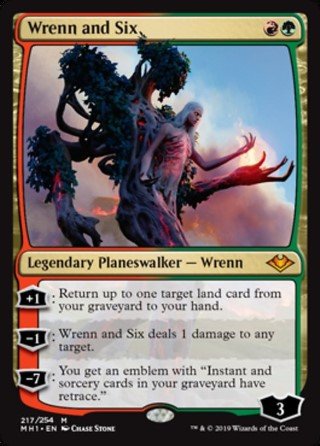 . There are a few different ways that you can combo with Wrenn that are highly resilient. One popular build is Wrenn as Oathbreaker and Crop Rotation
. There are a few different ways that you can combo with Wrenn that are highly resilient. One popular build is Wrenn as Oathbreaker and Crop Rotation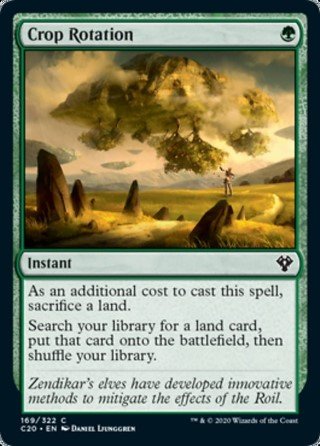 as your spell. Crop rotation allows you to sacrifice a land and go get a different land of your choosing. This allows you to play a toolbox-style deck getting what you need when you need it; Which includes game-winning combos.
as your spell. Crop rotation allows you to sacrifice a land and go get a different land of your choosing. This allows you to play a toolbox-style deck getting what you need when you need it; Which includes game-winning combos.
The distinguishing factor between cards in this category and the one above is the ability to more or less win the game on the spot.
Planeswalker Teir List

Here's a list of many different Planeswalkers and where the community feels they land based on the criteria mentioned above. Keep in mind, that this shouldn't affect your choice too much unless you're trying to be as competitive. Furthermore, if you choose to play a walker that "isn't competitive", doesn't mean it can't compete with those that are and many Oathbreakers on the casual list can be very fun.
Casual
- Ajani, Caller of the Pride

- Ajani, Inspiring Leader

- Ajani, Mentor of Heroes

- Ajani Unyielding

- Ajani, Valiant Protector

- Ajani Vengeant

- Ajani, Wise Counselor

- Angrath, Captain of Chaos

- Angrath, Minotaur Pirate

- Arlinn, the Pack's Hope // Arlinn, the Moon's Fury

- Arlinn, Voice of the Pack

- Ashiok, Dream Render

- Chandra, Bold Pyromancer

- Chandra, Flamecaller

- Chandra, Flame's Fury

- Chandra Nalaar

- Chandra, Novice Pyromancer

- Chandra, Pyrogenius

- Domri, City Smasher

- Domri Rade

- Dovin, Architect of Law

- Ellywick Tumblestrum

- Garruk, Primal Hunter

- Gideon, the Oathsworn

- Grand Master of Flowers

- Huatli, Dinosaur Knight

- Jace, Arcane Strategist

- Jace, Architect of Thought

- Jace Beleren

- Jace, Ingenious Mind-Mage

- Jace, the Living Guildpact

- Jaya, Venerated Firemage

- Kaito Shizuki

- Karn Liberated

- Karn, the Great Creator

- Kasmina, Enigmatic Mentor

- Kasmina, Enigma Sage

- Kaya, Bane of the Dead

- Kaya, Geist Hunter

- Kiora, Behemoth Beckoner

- Liliana, Death Wielder

- Liliana, the Necromancer

- Liliana Vess

- Mordenkainen

- Mu Yanling

- Mu Yanling, Celestial Wind

- Nahiri, Storm of Stone

- Nicol Bolas, the Deceiver

- Nissa, Genesis Mage

- Nissa, Nature's Artisan

- Nissa Revane

- Ral, Caller of Storms

- Rowan, Fearless Sparkmage

- Rowan Kenrith

- Sarkhan, Dragonsoul

- Sarkhan the Mad

- Sorin, Vampire Lord

- Tamiyo, the Moon Sage

- Teferi, Timebender

- Teyo, the Shieldmage

- Tezzeret, Cruel Machinist

- Tezzeret, Master of Metal

- Tibalt, the Fiend-Blooded

- Vivien, Nature's Avenger

- Vivien of the Arkbow

- Vraska, Regal Gorgon

- Vraska, Scheming Gorgon

- Vraska, Swarm's Eminence

- Zariel, Archmage of Avernus
Mid-Power
- Ajani, Adversary of Tyrants

- Ajani Goldmane

- Ajani Steadfast

- Angrath, the Flame-Chained

- Ashiok, Nightmare Weaver

- Besri Ket
- Chandra Ablaze

- Chandra, Awakened Inferno

- Chandra, Dressed to Kill

- Chandra, Fire Artisan

- Chandra, Heart of Fire

- Chandra, Pyromaster

- Chandra, the Firebrand

- Daretti, Scrap Savant

- Davriel, Rogue Shadowmage

- Domri, Anarch of Bolas

- Domri, Chaos Bringer

- Elspeth, Knight-Errant

- Elspeth, Sun's Champion

- Elspeth Resplendent

- Garruk, Caller of Beasts

- Grruk, Cursed Huntsman
- Garruk Wildspeaker

- Gideon, Champion of Justice

- Gideon Jura

- Gideon, Martial Paragon

- Gideon of the Trials

- Huatli, Radiant Champion

- Huatli, the Sun's Heart

- Huatli, Warrior Poet

- Jace, Cunning Castaway

- Jace, Memory Adept

- Jace, Unraveler of Secrets

- Jaya Ballard

- Jiang Yanggu

- Jiang Yanggu, Wildcrafter

- Karn, Scion of Urza

- Kaya, Orzhov Usurper

- Liliana, Death's Majesty

- Liliana of the Dark Realms

- Liliana, the Last Hope

- Liliana, Waker of the Dead

- Lolth, Spider Queen

- Lord Windgrace

- Nahiri, the Harbinger

- Nahiri, the Lithomancer

- Nicol Bolas, God-Pharaoh

- Nicol Bolas, Planeswalker

- Nissa, Vital Force

- Nissa, Voice of Zendikar

- Ob Nixilis of the Black Oath

- Ob Nixilis Reignited

- Ob Nixilis, the Adversary

- Ob Nixilis, the Hate-Twisted

- Oko, the Trickster

- Ral, Izzet Viceroy

- Ral Zarek

- Saheeli, Sublime Artificer

- Samut, the Teste
- Samut, Tyrant Smasher

- Sarkhan, Fireblood

- Sarkhan, the Dragonspeaker

- Sarkhan Unbroken

- Sorin, the Mirthless
- Tamiyo, Collector of Tales

- Tamiyo, Compleated Sage

- Tezzeret, Agent of Bolas

- Tezzeret, Artifice Master

- Tezzeret the Seeker

- The Wanderer
 ]
] - The Wandering Emperor

- Tibalt, Rakish Instigator

- Ugin, the Spirit Dragon

- Vivien, Arkbow Ranger

- Vivien Reid

- Vraska, Relic Seeker

High-Power
- Ajani, Strength of the Pride

- Ajani, the Greathearted

- Arlinn Kord // Arlinn, Embraced by the Moon

- Chandra, Acolyte of Flame

- Dack Fayden

- Daretti, Ingenious Iconoclast

- Dovin Baan

- Dovin, Grand Arbiter

- Dovin, Hand of Control

- Elspeth Tirel

- Elmister
- Estrid, the Masked

- Garruk, Apex Predator

- Garruk Relentless // Garruk, the Veil-Cursed

- Garruk, Unleashed

- Gideon, Ally of Zendikar

- Gideon Blackblade

- Kiora, Master of the Depths

- Kiora, the Crashing Wave

- Koth of the Hammer

- Liliana of the Veil

- Liliana, Untouched by Death

- Mu Yanling, Sky Dancer

- Narset, Parter of Veils

- Narset Transcendent

- Nissa, Worldwaker

- Oko, Thief of Crowns

- Professor Onyx

- Saheeli Rai

- Sarkhan the Masterless

- Sarkhan Vol

- Serra the Benevolent

- Sorin, Grim Nemesis

- Sorin, Imperious Bloodlord

- Sorin, Lord of Innistrad

- Sorin Markov

- Sorin, Solemn Visitor

- Sorin, Vengeful Bloodlord

- Teferi, Temporal Archmage

- Teferi, Time Raveler

- Teferi, Who Slows the Sunset

- Tezzeret, Betrayer of Flesh

- Tezzeret, Master of the Bridge

- Tezzeret the Schemer

- The Royal Scions

- Ugin, the Ineffable

- Venser, the Sojourner

- Vivien, Champion of the Wilds

- Vivien of the Hunt
- Vraska, Golgari Queen

- Vraska the Unseen

- Wrenn and Seven

- Xenagos, the Reveler

Competitive
- Aminatou, the Fateshifter

- Freyalise, Llanowar's Fury

- Jace, Wielder of Mysteries

- Kaya, Ghost Assassin

- Nicol Bolas, Dragon-God

- Nissa, Who Shakes the World

- Ral, Storm Conduit

- Rowan, Scholar of Sparks

- Tamiyo, Field Researcher

- Teferi, Master of Time

- Will Kenrith

Maximum-Power
- Chandra, Torch of Defiance

- Jace, the Mind Sculptor

- Nissa, Steward of Elements

- Teferi, Hero of Dominaria

- Wrenn and Six

How To Choose A Strong Signature Spell?
If it seemed like there were a lot of Planeswalkers to choose from just wait until you start looking for a signature spell. I've seen people break these down into a few categories as well. First, is spells you'll want to cast over and over again. Next, is spells that you'll only want to cast once or twice or "as needed", and finally, there's one you shouldn't play. Let's start off with some things that aren't the best choices from a competitive standpoint. Once again though, feel free to experiment and play whatever you think is fun.
Things To Avoid
We've talked a lot so far about Oathbreakers who have powerful interactions or combos with a given spell and that's good. However, some are better than others, and having an obvious combo in your command zone can do more harm than good because your opponents will know what you're planning right away. And considering that you can only cast your signature spell with your Oathbreaker out, it's easy to play around things.
The main two examples I see everyone use for this discussion are Narset, Parter of Veils and Windfall
and Windfall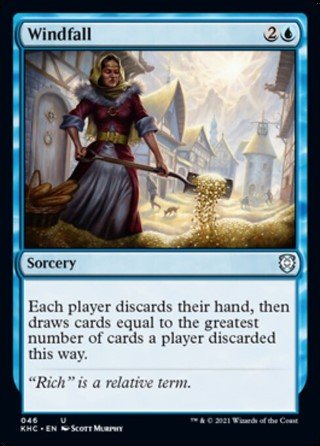 and some Planeswalker (usually Nicol Bolas, Dragon-God
and some Planeswalker (usually Nicol Bolas, Dragon-God ) and The Elderspell
) and The Elderspell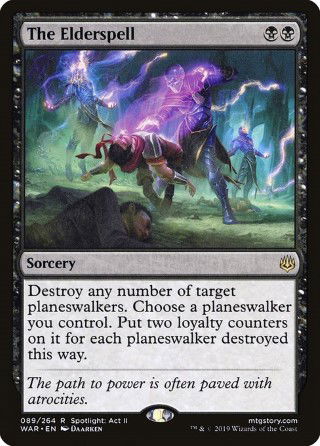 . These seem like they would both play great; You'll have access to both cards the entire game and the combo will go off without a hitch. Unfortunately, it rarely works out like that and I speak from experience. Nicol Bolas with The Elderspell was the first deck I built. And it didn't work.
. These seem like they would both play great; You'll have access to both cards the entire game and the combo will go off without a hitch. Unfortunately, it rarely works out like that and I speak from experience. Nicol Bolas with The Elderspell was the first deck I built. And it didn't work.
People see it coming, they play accordingly, and things rarely work the way you drew it up on paper. Another very important thing to consider is whether or not your combo wins the game. To elaborate, neither pair I mentioned above win you the game even if they do happen. If you want to play strategies like this consider running something more innocuous (or even a tutor) in the command zone and hide your combo piece in the deck and make sure it's impactful.
Another common mistake I see people make is choosing single target removal or counterspells as their spell. Again, I can see the thought process behind the choices. You think "I'll always have access to interaction and that's good." But it's important to remember the following:
- You can only cast the spell when your Oathbreaker is out. So, having something you may or may not want/need to cast when they are out isn't ideal.
- You have to pay commander tax for it. You want your interaction to be efficient and paying three mana for a Lightning Bolt
 or four mana for a Counterspell
or four mana for a Counterspell isn't great.
isn't great.
Spells You'll Want To Cast Multiple Times
It's important to remember to choose spells that will be valuable whenever they're able to be cast. In other words, you want the effect to be versatile if you're looking to cast it over and over again. Furthermore, avoiding commander tax through cost reduction is a great way to make sure you'll be able to generate lots of value from your spell over the course of a game. There are several different ways to go about this and which is the best for you will depend on your Oathbreaker.
Affinity
If you're playing a strategy where you're playing tons of artifacts Affinity can be a great option. If your board is consistently filled with artifacts you can often cast spells with Affinity for only their colored mana even through commander tax. Things like Thoughtcast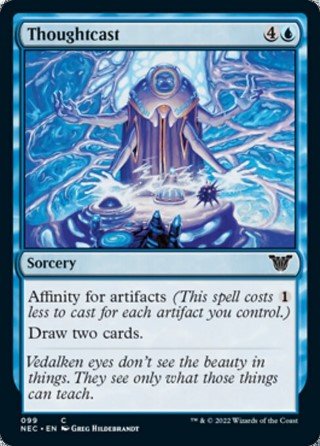 and Reverse Engineer
and Reverse Engineer have effects you'll want at any given point that you have access to them and are particularly good options.
have effects you'll want at any given point that you have access to them and are particularly good options.
Convoke
In a similar vein, Convoke cards can be cast multiple times over the course of a game if you're running tons of creatures/making tokens. There are a lot of options for this ability from removal to token makers, and even tutors. Assuming you can keep the board full these can be great options.
Delve
Assuming your deck is at all capable of filling your graveyard Delve spells can be quite powerful in the command zone. Tresure Cruise and Dig Through Time are obviously great for refilling your hand with cards. And Temporal Trespass
are obviously great for refilling your hand with cards. And Temporal Trespass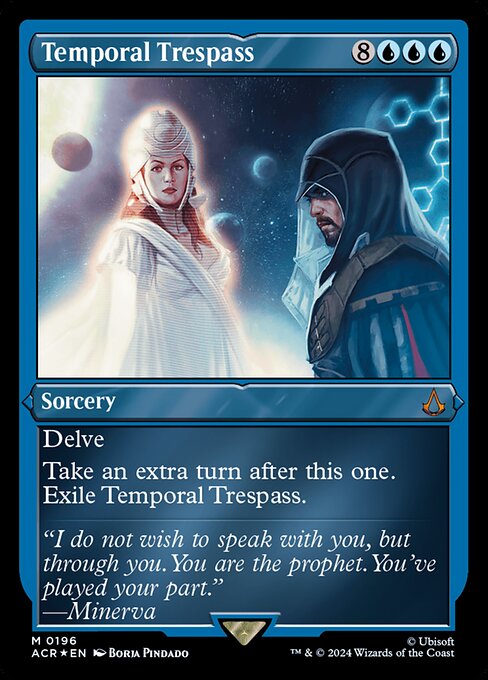 is an interesting one because the replacement effect of your spell going back to the command zone circumvents the exile effect.
is an interesting one because the replacement effect of your spell going back to the command zone circumvents the exile effect.
Spells You'll Cast Once Or As Needed
Moving on from spells you're looking to cast as often as possible we have spells that you'll be looking to get game-changing value off of with a single cast. Tutor spells are a great example of some spells that fit into this category. Another good example is one that I mentioned above - Nissa's Triumph when running a Nissa planeswalker. Getting to grab three lands can really change the game in a singleton format where players only have 20 life.
when running a Nissa planeswalker. Getting to grab three lands can really change the game in a singleton format where players only have 20 life.
Another type of spell that fits here is the "emergency button" type spell, which usually refers to board wipes or Teferi's Protection . You won't always need Wrath of God
. You won't always need Wrath of God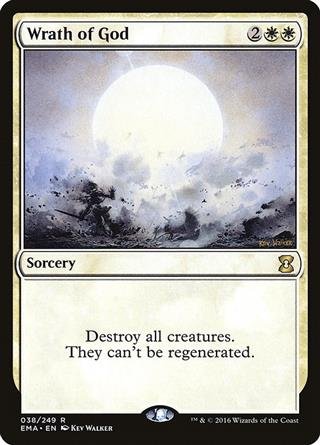 but having access to it a high percentage of the time is a very nice failsafe.
but having access to it a high percentage of the time is a very nice failsafe.
Lastly, tutors are versatile, and being able to grab certain things when you need them can enable a lot of strategies. This also keeps opponents on their toes. You could be running a devoted combo, a toolbox-style creature-based deck, or a controlling deck that can fetch answers at instant speed.
Conclusion
Whether you're a veteran Oathbreaker player or you're just now getting started, I hope you'll find this article helpful. I hope to have given you the tools needed to evaluate Oathbreakers and the spells that you can pair with them. Also, I want to say again, just play what you think is fun or interesting. Don't get too caught up on where something lands on the "tier list" unless you're trying to be as competitive as possible.
Speaking of my list of Planeswalkers - The bulk of it comes from older resources compiled elsewhere which I've added newer Planeswalkers to. That said, it's not a complete list by any means. So, if you notice any that I don't have listed let me know and I'll try and place them in the correct spot.



